#BRASIL HUE PORRA
Note
Brazilian character review: Jose Carioca
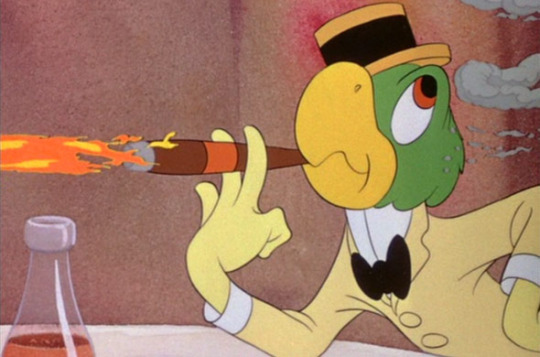
I can't say I have too many strong feelings on Zé Carioca as a character, but in retrospective, I think the existence of Zé Carioca is very emblematic of the way Brazil is viewed overseas, and the contrast between this sort of idyllic postcard fantasyland version of Brazil that gringos see, and the reality.
The first thing that comes to mind when I look at Zé Carioca, other than he's a popular Disney mascot, is that contrast. He's intended to look like a carefree young carioca (a term we use for people that come from Rio), but he's perpetually dressed like a 1920s caricature, the kind you only really find in pictures of your grandpa, and attempts to modernize his look have robbed him of his charm. His name is "José", which is a common Portuguese name usually abreviated to "Zé", but in pretty much every media he shows up in, they always say his name the Spanish way, instead of the Portuguese way.
The Zé Carioca that people outside of Brazil know is a character that only exists in the context of an ensemble with Donald and Panchito, mostly defined as a suave, romantic party goer, the phlegmatic opposite to the choleric Donald and the sanguine Panchito (I haven't checked out the new Caballeros cartoon, although I intend to). The Zé Carioca that Brazilians know is largely defined as a charismatic scammer who keeps going to great lengths to avoid work, the joke being that usually he goes through a lot more work to do so than he would have otherwise.
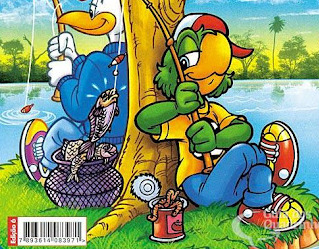
It's based a lot on the stereotype of cariocas as lazy beach-dwellers who look down on honest work to instead cheat and take shortcuts. Every region of Brazil has it's own stereotypes, in fact, Zé Carioca in Brasil has a lot of relatives to embody those, but gringos treat Brazil like Rio is the only city in it, which is why this stereotype gets applied to Brazilians in general, and, well, it is a stereotype to begin with. It's a change that allows him to work as a solo protagonist, but it also leads to a disconnect where fans of Zé Carioca don't quite see eye-to-eye with most depictions of the character not made locally, because it's not really the same character.
I gotta stress that I don't dislike Zé Carioca, not at all, I do think the idea behind his creation was a good one. I can't think of any Brazilian character, either created here or just coming from Brazil, who was a popular name overseas during this time period (could be wrong though, but nothing comes to mind). He gets credit for that, if nothing else. He's a fairly cute character and I do like seeing him when he does show up. But Zé Carioca seems like one of those characters who is popular as a mascot, but not so much as a character.
I think the best way I can explain this disconnect between what Zé Carioca is by sharing this text I found, written by Gabriel Bayarri here, that I translated and post below. I think this kinda gets to the heart of how I feel about Zé Carioca, which is not a dislike, just a disconnect.

Brazil was the land of Zé Carioca, he who had shown the world in 1942, during WW2, a Brazil that seemed cordial and happy, a Brazil that valued it's mixed heritage as a symbol of national culture. The parrot presented to Donald Duck a city proud of itself, joyfully beautiful, where samba, cachaca, parties and romantic rascals all mixed together.
Now, he's watched, terrified, as his wonderful city embraced armed heroes, and took flight perplexed, trying to understand what had changed in a city he recalled painted in watercolor strokes. Zé Carioca flew to the heart of the tropical city, where spaces of resistance stood symbolized, straggling remnants of a democracy that he used to think was harmonious and shielded against the monsters that ruled it.
The parrot fluttered its wings between the hills, and rested its feathers in its beloved square in Cinelândia, and breathed its history, of which he only recognized the harmonious part: the square had become a central place for beginnings of the 20th century, representing the Belle Époque of Rio de Janeiro. Cinelândia acquired French features, so desired by the recent Brazilian Republic, and it tried to become a Tropical Paris. At it's center, slaves recently freed from plantations arrived, while the square acquired a cosmopolitan personality. This was all familiar to the parrot, who found in history a joyful account.
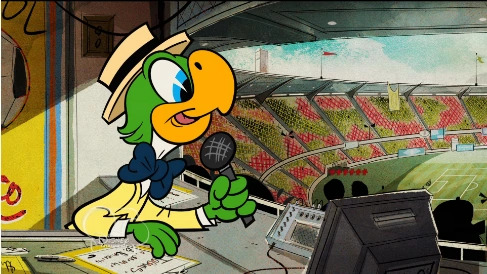
From abroad, the narrative of a happy and harmonious Rio de Janeiro recovered the idea of a cordial Brazil, without racism and without violence, promoted by Zé Carioca. In addition, this imagery of the city was promoted to foreigners as the period of a “Golden Brazil”: the drop in poverty rates, the increase in investments and the enormous influence in the Latin American and global context.
The bird breathed the chronicles of literary bohemians who populated the surroundings, and who built in their writings the characters who walked the square, its muses, its rogues, its carnival heroes or its capoeiristas. Authors built at that time a model of the “carioca people” that the parrot Zé Carioca repeated and synthesized in his image: a kind, cordial and warm character who crossed borders, transmitting to the world a image of Brazil harmonized and absent from conflicts and violence. It was that conception that, in Brazil, everything would tend to soften and adapt.
Cinelândia had begun to fill with cinemas, rooms of spectacle. Hotels, restaurants, night bars. The arrival of hotdogs at the Square was a revolutionary bridge, from North-American influences to the carioca lifestyle.
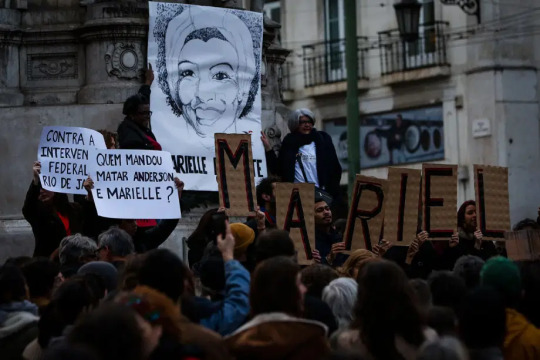
The parrot was proud of his city, until a woman approached him: “Our hot dog is carioca to the core”, explained the street vendor who was carrying a T-shirt with the face of Marielle Franco. Who was this woman who wanted to explain to him what was like to be brazilian: Who was this woman on her shirt? Where was Carmen Miranda, with the fruits on her head?
Then, the parrot listened in the square to the story of the murder of the councilwoman Marielle and her driver, and the new reports of violence on “carioca nights”, and its police conflicts against immigrants.
But Zé Carioca did not believe that his beautiful city was affected by these issues.
The parrot was aware that Cinelândia represented an image of the essence of what it was to be Brazilian, the construction of its own unique soul in a public space, the creativity and trickery and joy.

But he was surprised to hear that his happy and dancing people were also active warriors, who had used this square over the decades as a historical space for building demands, from The March of 100.000 against the military dictatorship, and the recent manifestations against the new president.
In one of its streets, the square bore the name of Marielle herself, the murdered councilwoman whose plaque had been broken publicly by the current governor of Rio, and whose death had become a symbol.
The parrot had Disneysified the image of his city, in a portrait of heroes, castles and tropical princesses, which made it difficult to understand now the political victory of monsters.
It seemed as if the history of Brazil was rebuilding itself before his eyes, and its people were now made up of activists, women warriors, LGTB+ collectives and anti-racism movements that defended civil rights and identity demands, of a Brazil that could not be pigeonholed, because it wasn't made for beginners.
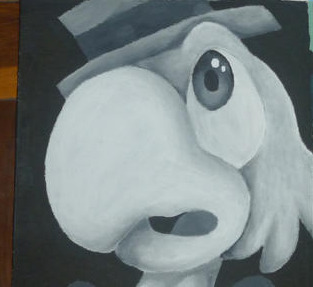
What had happened to his colorful Brazil? – he asked himself nervously, replacing his straw hat and plucking his feathers.
Something transformed in the parrot's gaze, and after a brief disturbance, he decided to regain his composure. The bird spread its wings and took flight to Copacabana Palace, the place where it had been born from the hand of Walt Disney 77 years ago. He needed to reflect, think of the the gray tones of truth that splashed in his colorful costume, and seek new spaces to resist the monsters.
Perhaps the world had believed Zé Carioca's colorful report, in the palette of illusions that an emerging Brazil offered, and they had forgotten that, like every grown child, Brazil had nightmares. Kicking up at night over its racism, structural militarism, murderous violence, patriarchal inequalities.
Perhaps Zé Carioca had fallen in love with the exuberance of a land of fruit, sailors and smiles, and the world had listened to his account, a lovable sales pitch to tourists and sporting mega-events, and they had forgotten the voices of their people who watched helplessly the approach of a military parade from congress.
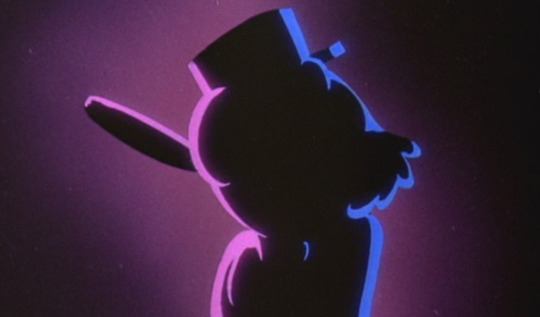
Zé Carioca's flight transformed the parrot, and in his old age, he went through a rite of passage to adulthood. After years of blindness to the violence of a post-colonial society and it's extended torture under jackboots, Zé Carioca opened his eyes, and faced the hidden part of a wounded Brazil.
A Brazil that had been dressed up in tropical colors and that now had to be sincere, with the world and with itself, in order to overcome the times of monsters.
#replies tag#disney ducks#jose carioca#zé carioca#brazil#BRASIL HUE PORRA#olha pra ser honesto eu nunca tinha realmente parado pra pensar no zé carioca na minha vida#mas tu quer um textão vai ter textão#não que eu ache ruim que o personagem seja meio antiquado#mas eu achei bem interessante a ideia de isso ser parte de uma história#em que o zé carioca é um simbolo de uma coisa que simplesmente não existe mais#e talvez nunca tenha existido#acho que isso pode ser uma ideia interessante pra explorar
81 notes
·
View notes
Note
Gonna go a bit off theme with this next ask. You've talked about the most iconic Pulp Hero, the most iconic Superhero, the Most Iconic Fighting Game hero, and the most iconic Kaiju. Do you have any thoughts on the most iconic Shonen Hero, Dragonball's Son Goku
I have zero thoughts on Goku, actually. Sorry to dissappoint.
I wasn't allowed to watch DBZ as a kid because my mom forbade me from watching a show with a character named Mr Satan in it. The most I ever watched of DBZ was when I took a voice acting course in a studio that's owned by the Brazilian voice actor for Goku (who also voices Spongebob although it really strains his voice), and so a couple of DBZ scenes were used as practice. But I never bothered catching up as a teenager and as an adult I still have never watched any part of it, probably never will to be honest. I know a lot of it through pop culture osmosis and it doesn't really seem like my thing.

IIf I had to say anything else though, is that all the memes about Dragon Ball being stupid popular in Latin America are all 100% true and not just for Mexico. It's this completely inescapable facet of Brazil's pop culture that pretty much everyone has grown up with or at least heard about, or at least knows the memes offhand, up there with El Chavo and Woody Woodpecker (I know Woody's popularity is baffling to you guys but trust me, if you were a kid watching TV you couldn't escape Woody Woodpecker, the little fucker was everywhere and you just had to take it as it was). I don't have much of an explanation as to why other than it was afforded very generous re-runs across a lot of stations and just happened to catch the right generation at the right time, but there's probably more to it I'm missing and should look into.
8 notes
·
View notes